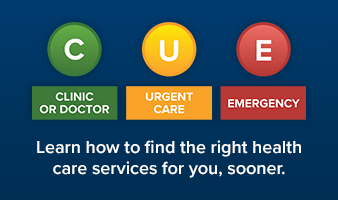Collaborative care seeks patient’s perspective
By Tracy Thiele
Winnipeg Regional Health Authority
Published Friday, February 1, 2019
Health care is not a static thing.
It is constantly changing as new research and insights emerge to help shape improvements to the way we deliver care to our patients and clients.
As Manager of Nursing Initiatives for the Winnipeg Regional Health Authority, I know that some of these changes, such as new treatments and procedures, are visible to the public at large. But other efforts to enhance the delivery of care tend to fly under the radar.
One example is our recent decision to add the patient's perspective to our collaborative care training teams.
To understand why this is important, it helps to have a little background.
Historically, health-care providers, such as nurses, doctors, physiotherapists and pharmacists, have tended to work in silos, where each discipline has its own role and scope. As a result, they often lacked any detailed knowledge of what their colleagues could bring to the table in terms of patient care. This would often lead to duplication of work and lack of co-ordinated care.
The collaborative care model is designed to address this problem. By focusing on shared leadership, creating high functioning teams, clarifying roles, and resolving conflict, the model enables health-care providers from different professional backgrounds to come together to solve a particular problem or issue with a view to improving patient care. In addition, health-care providers are able to gain a better understanding of the role and values of each member of the team. The trust and respect that is generated creates new alliances and new possibilities for resolving an issue.
We first introduced the concept of collaborative care into its training program in 2012. Since then, it has been offering a four-day workshop that provides interdisciplinary project teams with tools, resources and hands on education in the principles of collaborative care.
More recently, we decided to build on the collaborative care training model by inviting former patients and/or their family members to participate in various projects last fall.
In some cases, the patient advisors were involved in planning. In other cases, they were asked to provide feedback to inform documents, communication materials, or implementation tools.
In every case where the patient's voice was sought, teams found important ways to better resolve the problem or issue that brought them together.
One example of this collaboration involved a cardiac team at St. Boniface Hospital that was working on developing a patient-centred pathway for people with aortic stenosis, a narrowing of the aortic valve that impedes blood flow.
A Transcatheter Aortic Valve Intervention (TAVI) is a treatment option for people with severe aortic stenosis. Patients who had a TAVI in the last 18 months were contacted by phone and asked to share their perspectives on their clinic visits leading up to the procedure.
Team members were particularly interested in the physical, financial, and emotional demands of these appointments. The team also wanted feedback on their patients’ overall satisfaction with their clinic visits, quality of education, and if they felt adequately prepared for the procedure. In broad terms, the team was asking "what and where can we improve?"
While all participants expressed gratitude and satisfaction with the procedure, many felt the number of clinic visits needed prior to the procedure were burdensome to them and their family. In addition, travel to the clinic was an added financial burden for those outside of Winnipeg.
The information they provided led the team to review the patient pathway in the lead-up to the procedure, with the aim of scheduling appointments in a way that decreases the length and number of clinic visits while still providing information for decisions to be made in a timely manner.
The TAVI team collaboration is just one example of how the patient's voice is being heard at the WRHA these days. There are many other examples of former patients who have made important contributions to improving the delivery of care in hospital and clinics throughout our community.
In the end, collaborative care is about working together to use the roles and skills of health-care teams more effectively, and to leverage the collective knowledge and wisdom of all members, including former patients, to ensure better health for all.
For information on how to become involved in the WRHA's patient advisory program, please e-mail [email protected].
Tracy Thiele is Manager of Nursing Initiatives for the Winnipeg Regional Health Authority. This column was originally published in the Winnipeg Free Press on Friday, February 1, 2019.

